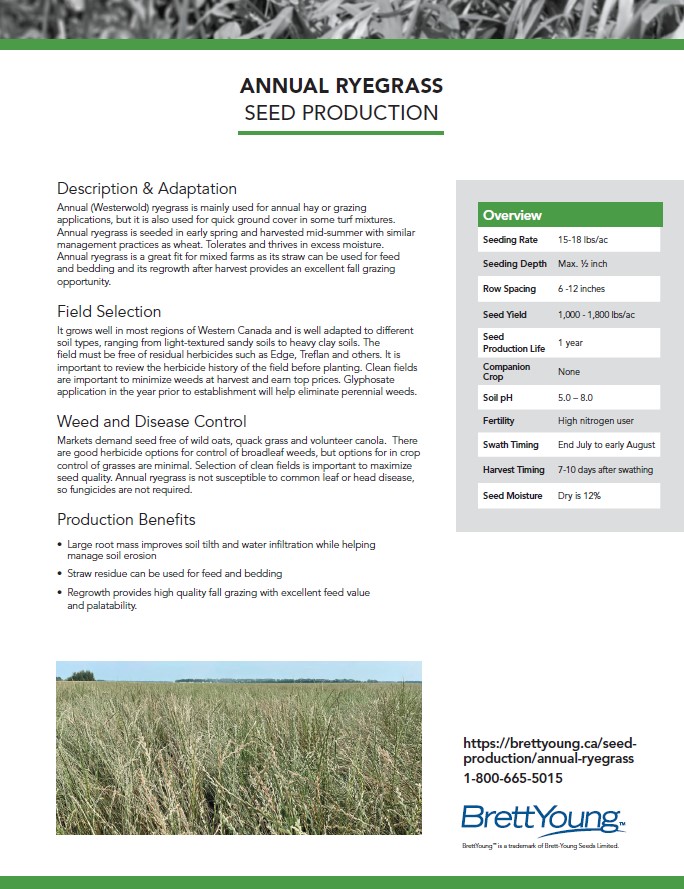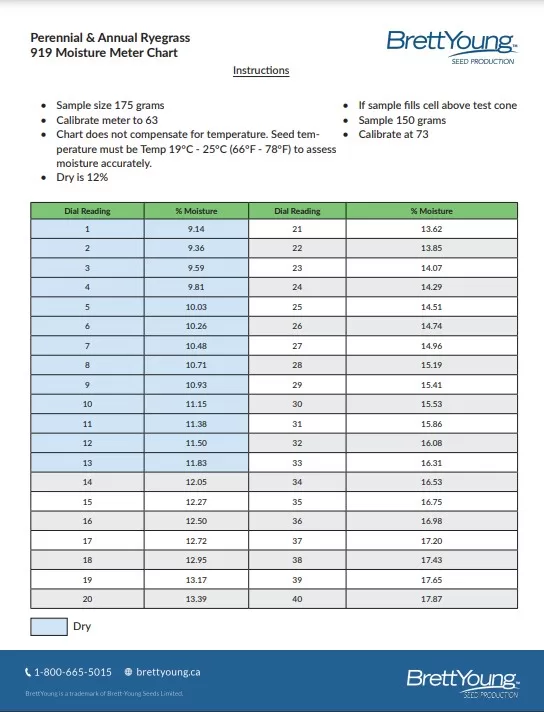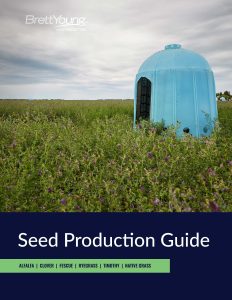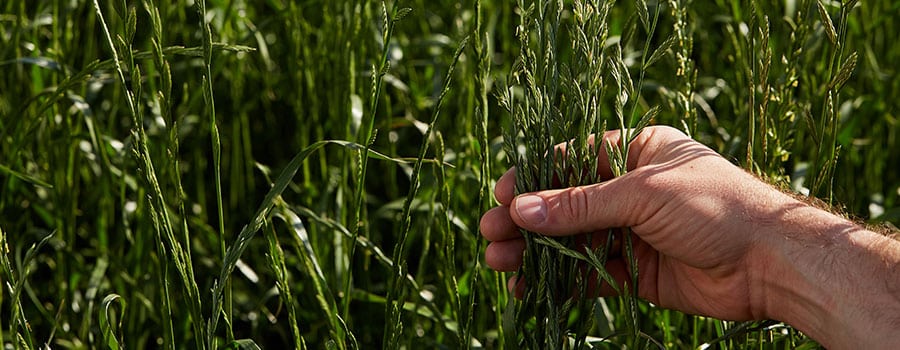
Annual (Westerwold) ryegrass is mainly used for annual hay or grazing applications but is also good for quick ground cover in some turf mixtures. Annual ryegrass is seeded in early spring and harvested mid-summer with similar management practices as wheat. It tolerates and thrives in excess moisture and is a great fit for mixed farms, as its straw can be used for feed and bedding, and its regrowth provides excellent fall grazing opportunities.
Field Selection
Annual ryegrass grows well in most Western Canadian regions and is well-adapted to different soil types, growing in everything from light-textured sandy soils to heavy clay soils. The field must be free of residual herbicides such as Edge® and Treflan®, and it’s important to review the herbicide history of the field before planting. Clean fields are important for minimizing weeds at harvest and earning top prices for your crop. Glyphosate application in the fall prior to establishment will help eliminate perennial weeds.
Weed and Disease Control
Markets demand seed free of wild oats, quackgrass and volunteer canola. There are good herbicide options for the control of broadleaf weeds, but options for in-crop
control of grasses are minimal. The selection of clean fields is important to maximize seed quality. Annual ryegrass is not susceptible to common fungal diseases, so fungicides are not required.
Seeding
Conventional seeding equipment can be used. Seeded at 15-18 lbs/acre, air drills, air seeders and hoe drills work well.
Harvesting
Annual ryegrass must be swathed. The number of days to reach full maturity is similar to barley. Annual ryegrass is usually harvested seven to ten days after cutting using either conventional or rotary combines. Annual ryegrass is considered dry at 12% moisture but can be harvested at 14% so long as aeration is used to cool the seed and remove excess moisture. Don’t use heat as it can affect germination.
Production Benefits
- Large root mass improves soil tilth and water
infiltration while helping manage soil erosion - Straw residue can be used for feed and bedding
- Regrowth provides high-quality fall grazing
with excellent feed value and palatability
| Features | |
|---|---|
| Seeding Rate | 15 – 18 lbs/acre |
| Seeding Depth | Max ½ inch |
| Row Spacing | 6 – 12 inches |
| Seed Production Life | 1 year |
| Companion Crop | None |
| Soil pH | 5.0 – 8.0 |
| Fertility | Medium nitrogen user |
| Swath Timing | Late July to early August |
| Harvest Timing | 7 – 10 days after swathing |
| Seed Moisture | Dry is 12% |
| Seed Value (Est.) | $0.35 – $0.55 / lb |
| Seed Yield (Average) | 800 – 1,800+ (1,200) lbs/acre |
| Cost of Production | Similar to spring wheat |
Annual Ryegrass Tech Sheet & Moisture Chart
SEED PRODUCTION GUIDE
CONTACT A SEED PRODUCTION SPECIALIST
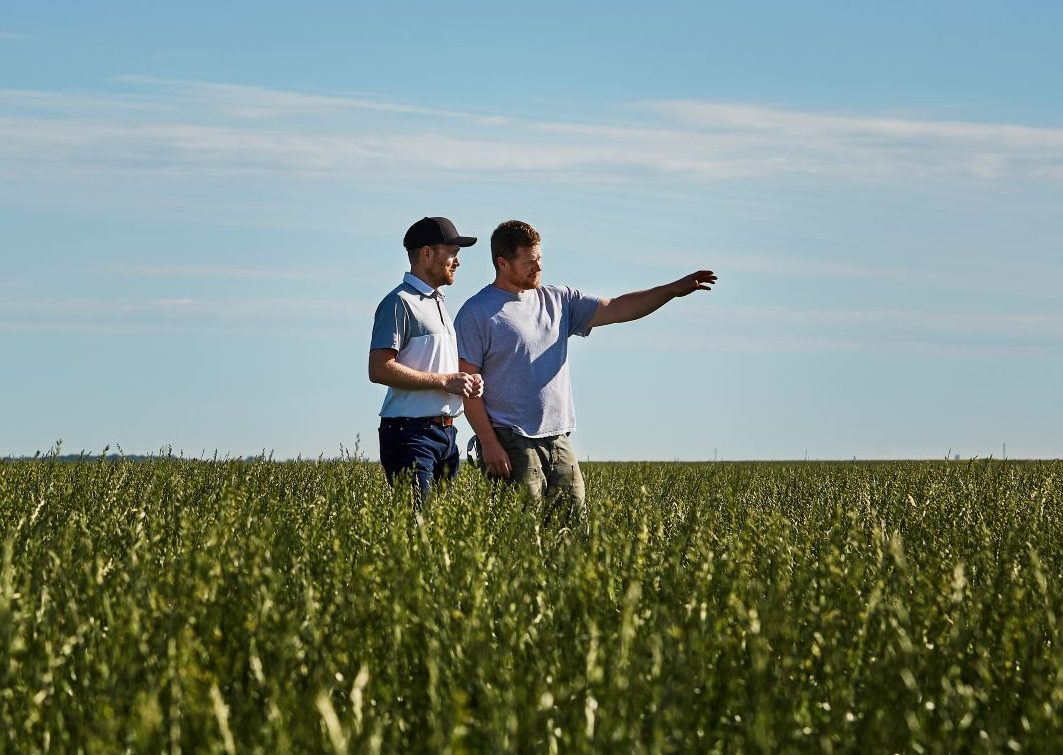
From scouting and selection of production fields, fertility programs, pest management and growth regulator recommendations to swathing, harvest timing and cover crop management, a dedicated Seed Production Specialist is with you every step of the way to help maximize returns.

